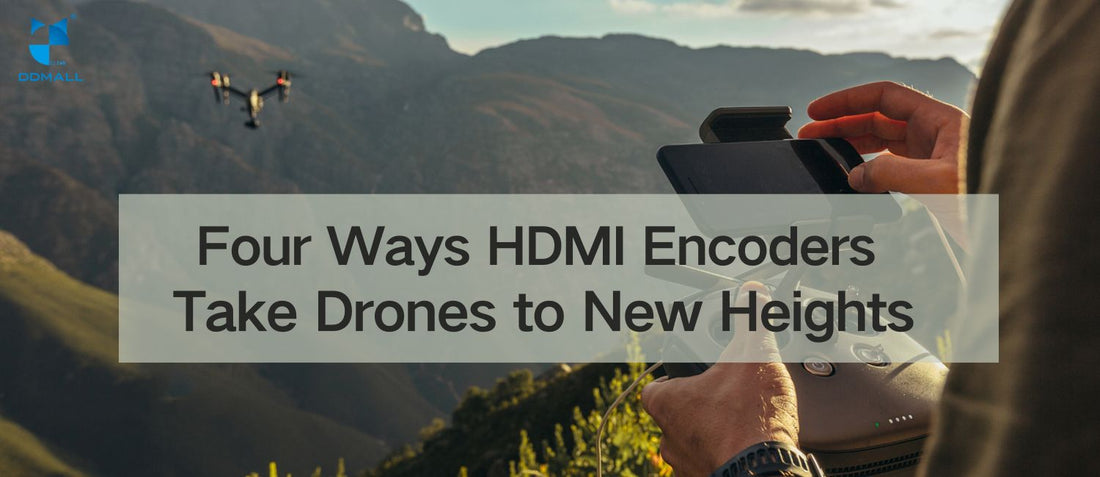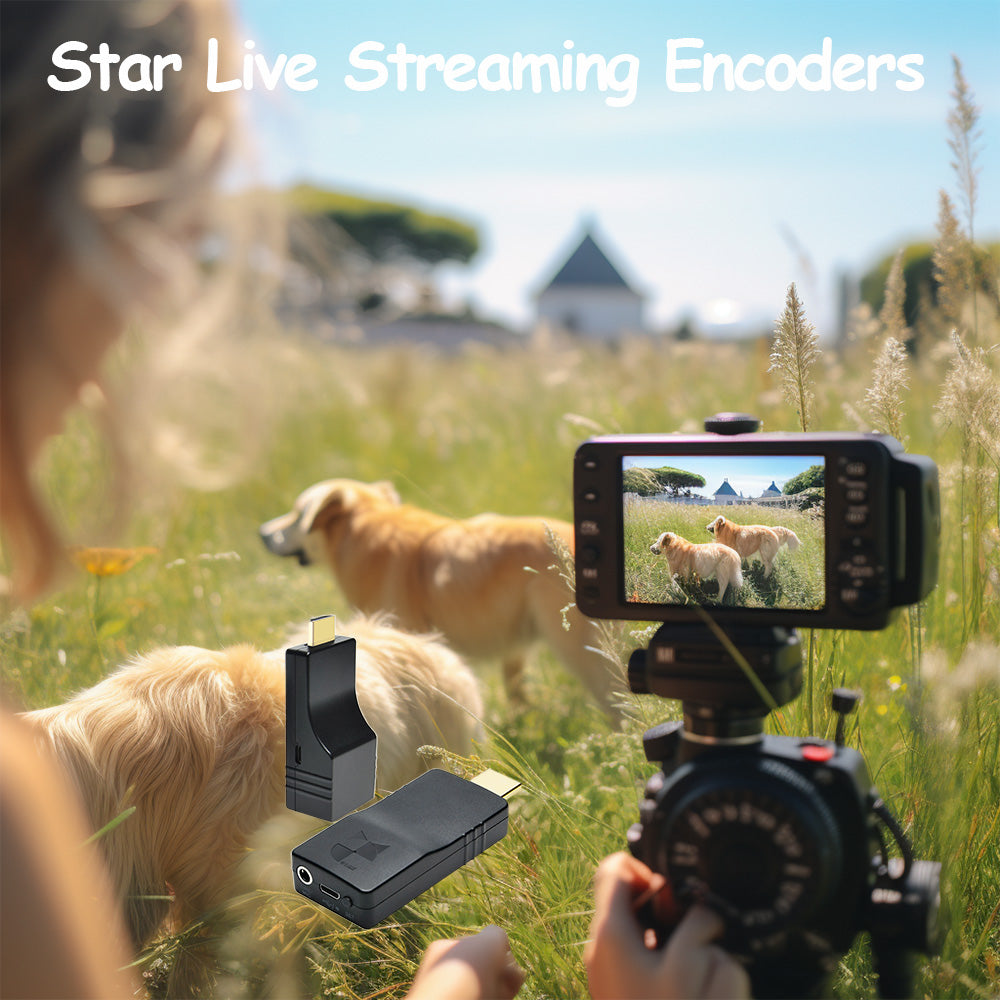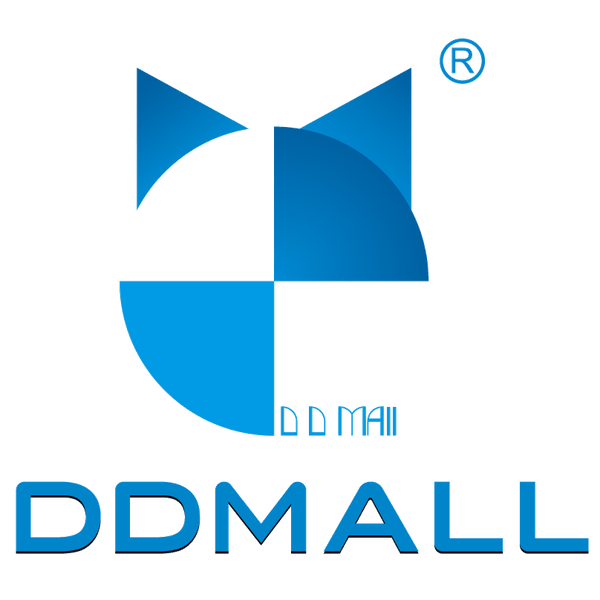
4 Ways HDMI Encoders Take Drones Photography and Videography to New Heights
Share
Have you ever watched cool videos that people take with drones? Well, those drones need special equipment to get the video from the drone's camera onto things like your phone or computer so you can see what the drone sees. One important piece is called an HDMI encoder.
HDMI stands for High-Definition Multimedia Interface. It's a digital connection that lets devices like cameras, TVs, and monitors talk to each other and share high-quality video and sound. Pretty much anything with a screen these days uses HDMI.
Drones with hdmi transmitter
Drones need HD encoders to take the video their cameras capture and put it into a format that can be transmitted over long distances using things like antennas and wireless networks. Without an encoder, you wouldn't be able to see what the drone sees as it's flying around!
HDMI is better than older connection types like VGA because it supports really clear, High-Definition pictures and sound without any loss of quality. The signal is also encrypted for security so no one can snoop on the video feed.
So in summary, HDMI encoders are an important part of uav remote control that make it possible to view the drone's camera view from far away on screens like phones and computers. They take the raw video and audio and prepare it for wireless transmission using the HDMI digital format we see everywhere today.
Table of Contents:
- The Role of HDMI Encoders in Drones
- Benefits of HDMI Encoders for Drones
- Light, Camera, Action
- Highest Video Standards
- Low Latency Transmission
- Live Streaming Encoder Event: Feel the Buzz From Above
- FPV Racing: Drones Get Sporty
- Mapping and Surveying: More Than Just Cool Videos
- Meet HEV-4KW: The Master of HDMI Encoders
- How HDMI Encoders Are Revolutionizing Drone Applications and Pushing Creative Boundaries
The Role of HDMI Encoders in Drones
Drones have cameras that take great pictures and videos from above. But getting that footage back to your phone or computer right away can be hard. This is because wireless signals like WiFi only work close by.
That's where HDMI streaming encoders help. They act as the middleman between the drone's camera and what you watch the footage on. HDMI encoders change the video signal into a format that can be sent through the air without wires.
HDMI encoders change the raw footage from the camera into a smaller digital file, like H.264 or H.265. Compressing the video makes the file size smaller without losing too much picture quality. This lets the footage be transmitted wirelessly over longer distances to your viewing device.
This compression allows for real-time transmission of high-definition video over long distances, making it ideal for live broadcasts, monitoring, and remote control applications.
Benefits of HDMI Encoders for Drones
The integration of HDMI encoders in drones brings forth a plethora of benefits that enhance the overall drone experience and expand their capabilities.
- Wireless video transmission for more mobility and flexibility without wires.
- Clear HD video quality even from long ranges subject to transmitter power and line-of-sight conditions.
- Ability to view camera feeds and pilot drones from safe distances without risking interference from wires.
- Compatibility with HD cameras that natively output HDMI video without needing additional conversion.
- Real-time video monitoring for tasks like inspection, photography and cinematography.
Lights, Camera, Action!
In the world of filmmaking, capturing breathtaking aerial shots has always been a coveted technique. From soaring landscapes to dynamic action sequences, aerial cinematography adds a whole new dimension to storytelling.As the capabilities of drones have advanced, their use in professional film and video production has dramatically increased.
However, capturing high-quality aerial footage and transmitting it back to operators or studios in real-time poses unique technological challenges.
Drones with video encoder for filmmaking.
IP streaming encoder solutions have become increasingly vital for overcoming these hurdles and enabling drones to achieve their full potential as aerial cinema tools.
Highest Video Standards
Professional filmmaking applications demand the highest video standards, with resolutions of 4K and above now considered minimum quality thresholds.
However, drones have limited bandwidth and payload capacities, making it difficult to transmit uncompressed HD/4K video from the air. HDMI encoders address this by compressing the video stream without compromising on quality.
They allow drones to transmit footage at resolutions up to 4K@p30 with virtually no latency, giving directors and cameramen pro-level image quality to work with.
Low Latency Transmission
Low latency transmission is also important for drone safety and shot accuracy. With HDMI encoders providing real-time video feeds, you can precisely control aircraft movement and camera operation. Directors receive stable imagery for capturing complex shots.By encoding HDMI input signals into compressed formats optimized for transmission over IP networks, encoders like the DDMALL HEV-4KW remove the latency and reliability problems that come with raw HDMI transmission.
This all helps drones meet the demanding needs of big-budget film production while still flying operations safely.
Live Streaming Events: Feel the Buzz From Above
In today's digital age, live streaming has become a popular medium for engaging and captivating audiences. And when it comes to aerial events and performances, live streaming offers a unique opportunity to showcase the beauty and excitement from a bird's-eye view.For live concerts, parades, or sports, streaming aerial video engages distant viewers as if they possessed bird's-eye seats. Monuments, landmarks, and natural wonders also come alive through cinematic drone tours streamed worldwide.
Drone with HDMI encoder for live concert.
Advanced encoders even incorporate hardware-accelerated H.265/HEVC video encoding, slashing bandwidth needs by half compared to H.264. This allows higher resolutions like 4K while staying within bandwidth limits. Viewers worldwide thus enjoy broadcast quality without delay regardless of their devices or connection speeds.
Through stabilizing gimbals and error correction, rock-solid aerial video entrances global audiences. Event organizers deliver once-inaccessible perspectives that captivate and involve remote attendees like never before, all with the help of robust streaming hardware carried aloft. Live streaming opens new vistas by bringing viewers along for unique drone's-eye views of exciting moments wherever they unfold.
HDMI encoders successfully capture audiences online by delivering the exhilaration of each moment as if they had a front-row seat in the sky. It's a new dimension propelling live streaming to greater viewer engagement heights.
FPV Racing: Drones Get Sporty
Here are some key points about the use of HDMI encoders in FPV racing:
HDMI encoder for Drone benefits FPV Racing.
- HDMI encoders allow First Person View (FPV) racing pilots to view real-time, high-definition video feeds from onboard cameras on their goggles or monitor. This provides a much clearer and more immersive experience compared to standard analog video.
- The low-latency capabilities of HDMI enable virtually real-time video with little delay. This is crucial for navigating racing courses at high speeds with precision and reacting quickly to changes. Higher latency can negatively impact performance.
- The improved image quality from HDMI encoders gives pilots better situational awareness of their surroundings, other pilots, and obstacles on the track. They can spot finer details that may help tactical decision making during races.
- Viewing races in clear HD can help pilots push their skills to new limits by feeling more confident at higher speeds. The enhanced visibility reduces risks and allows them to race in a more aggressive yet safer style.
- For competitive pilots, HDMI equipment can provide a competitive advantage over those still using analog systems. The better visibility may translate to improved reaction times, course navigation, and overall race results against other pilots.
- As HDMI encoders become more affordable and standardized in the FPV racing community, they are becoming essential gear for any pilot looking to maximize their skills, safety, and competitiveness - especially for tournament-level races.
Mapping and Surveying: More Than Just Cool Videos
A lot of folks see remote drones control and think just entertainment, but their uses go way beyond movies and Instagram clips. Take something like mapping and surveying - drones have totally changed the game there. Before, you'd have guys on the ground with survey equipment spending all day doing measurements. Now drones with HD video can swoop over an area quickly and get insanely accurate data.
And it's that crystal clear video that makes it all possible. HDMI encoders beam the footage straight from the drone, giving surveyors a perfect live view of the land. Super important when you need to analyze an area and capture details. Those encoders let the team watch in real-time too, making adjustments as they go. Really helpful on big projects where multiple crews have to work together - they can share what they find right away.
DHMI encoder for drones to mapping and surveying.
Speaking of sharing, those encoders also allow surveyors to collaborate remotely. Great for when crews have to split up to cover more ground. It lets them keep in touch and pool all their insights instantly, speeding up the whole mapping process.
Above all, that real-time video is key for making on-site decisions. Through the encoder feed, surveyors can see obstacles, plan routes, and analyze spots that need a closer look - all from the drone's eye view. And later, they can zoom in on the footage from a laptop to extract precise measurements and data. Drones with encoders have totally streamlined how surveyors do their jobs. No more wasted time or duplicate work. Just efficient flying and accurate results.
Meet HEV-4KW: The Master of HDMI Encoders
DDMALL ultra-mini video encoders allow drones to easily stream and broadcast live footage. Featuring ultra-lightweight and ultra-low power consumption design, operators can simplify their setup process and focus on capturing stabilized HD video during flights.
1. Size and Weight
At only 75x32x15mm and 25g, the DDMALL HDMI ultra-mini video encoder is ultra-compact and ultra-lightweight, making it ideal for applications with strict size and payload constraints such as drones. This is important for drones which have limited payload capacities
Drones with HEV-4KW encoder uses in various ways.
Drawing only 2.6W of power, it can be powered directly from the HDMI port or via USB from a mobile battery bank. This means no extra batteries needed, ultra-low power consumption and saving weight. It is suitable for long flights on a single battery charge.
It can encode and stream HDMI inputs up to 4K@30Hz video quality. This allows capturing high resolution aerial footage in stunning detail for live streaming.
Encoding technologies like HEVC and protocols like SRT help deliver low latency streams suitable for real-time applications like aerial newsgathering.
Features like one-click start/stop of streams make it simple to operate in ultra-convenience during drone flights via a mobile device.
The HDMI video encoder support stream on 4 platforms simultaneously with different protocols for each platform in 1080p60Hz at video bit rate 16Mbps for each stream.
How HDMI Encoders Are Revolutionizing Drone Applications and Pushing Creative Boundaries
Altogether, the HEV-4KW's winning blend of portability, reliability, efficiency and 4K capabilities make it a top choice for professional drone applications where pristine video quality and continuous transmission are mission-critical from above.Its versatile yet rugged design constantly performs under drones' punishing conditions.
HDMI encoders have become indispensable tools in various applications of aerial cinematography.
From capturing stunning aerial shots in filmmaking to mapping and surveying applications, FPV racing, live streaming events, and search and rescue operations, HDMI encoders have revolutionized the way we capture, transmit, and experience aerial footage.
You know, drone video has come such a long way in such a short time. Just a few years ago, all we got were these choppy, low-res footage of whatever the pilot happened to fly over. But now? Man, the stuff drones can capture nowadays is straight-up breathtaking.
Clear, high-def video beamed directly from the aircraft in real-time - it's like you're up there with the drone but without all the wind and effort. This has totally changed the game for content creators, first responders, you name it. No longer do you have to wait hours to see what footage was snatched; now every swoop and turn is viewed as it happens. Audiences are right there with you, feeling like they're soaring overhead too. Pretty cool what a little hardware advancement can do, huh?
And it's only going to get better from here. These HDMI encoders that transmit the footage, they keep evolving and pushing the limits of what drones can visually accomplish. One day soon we'll have cinema-quality aerial films shot entirely from drones. Who knows what other crazy creative or useful applications will open up as the tech advances further? I can't wait to see it.
So whether you're a filmmaker, a surveyor, an FPV racer, or involved in search and rescue operations, HDMI encoders are essential tools that will take your aerial experiences to new heights.




